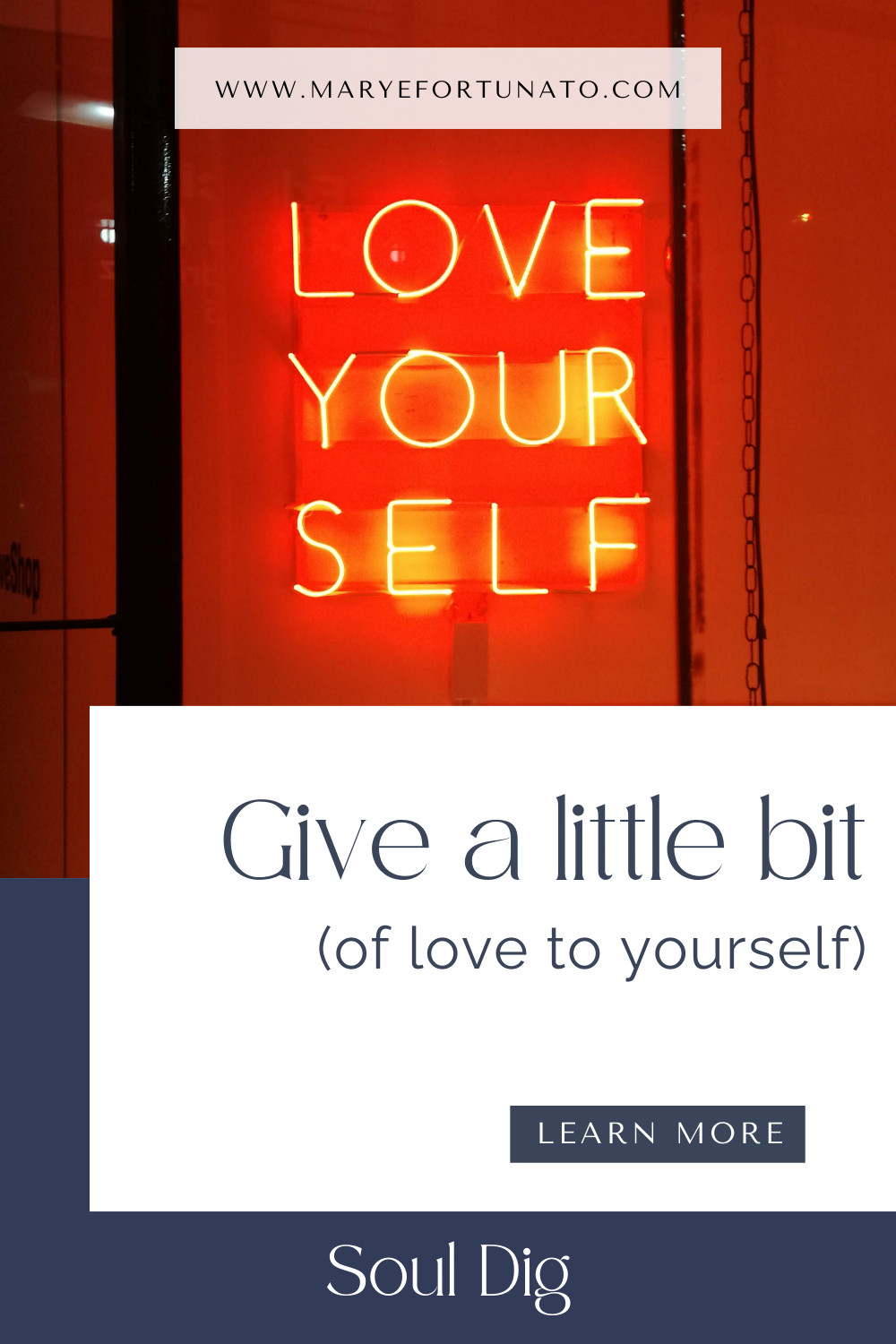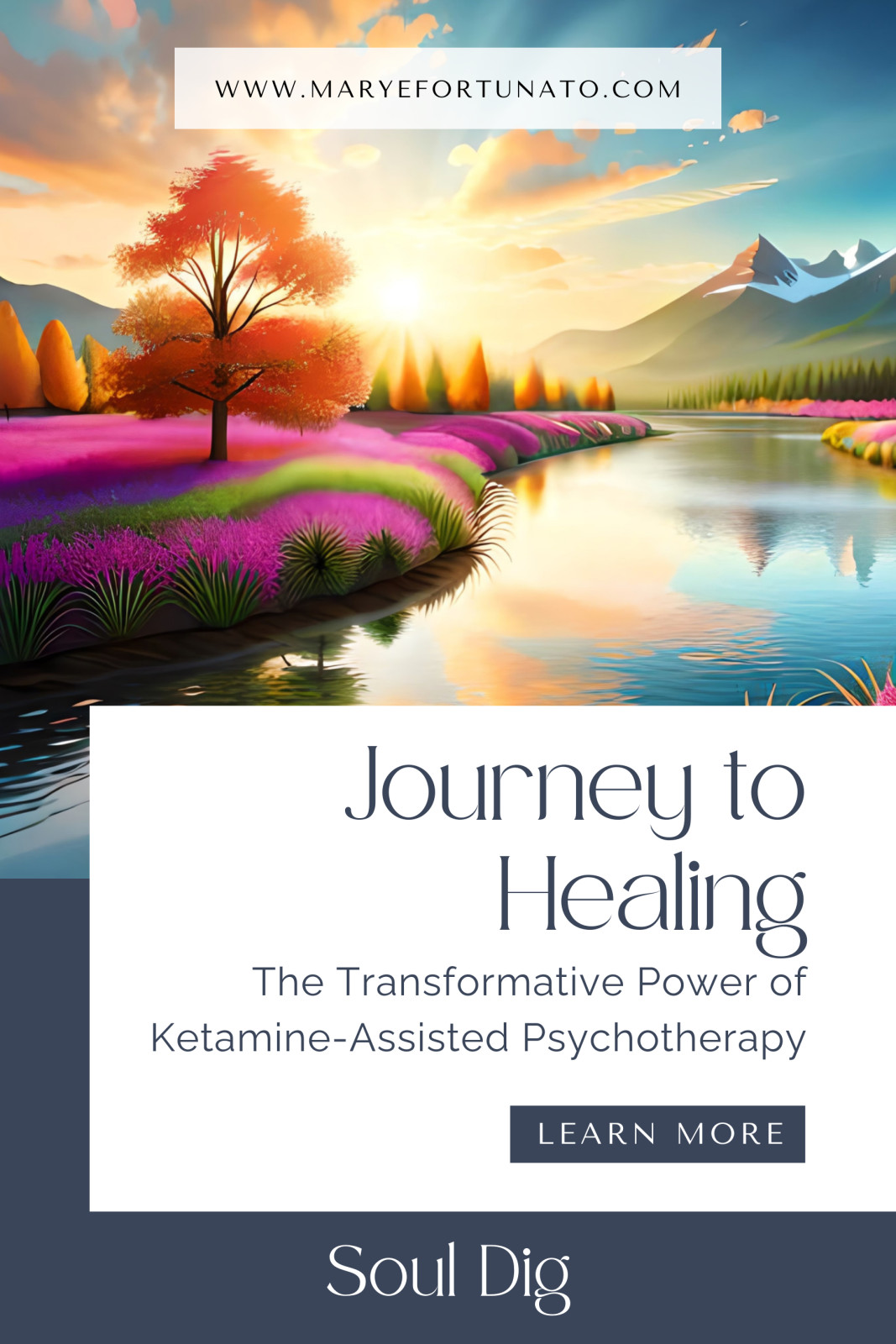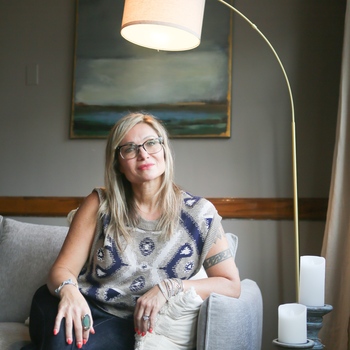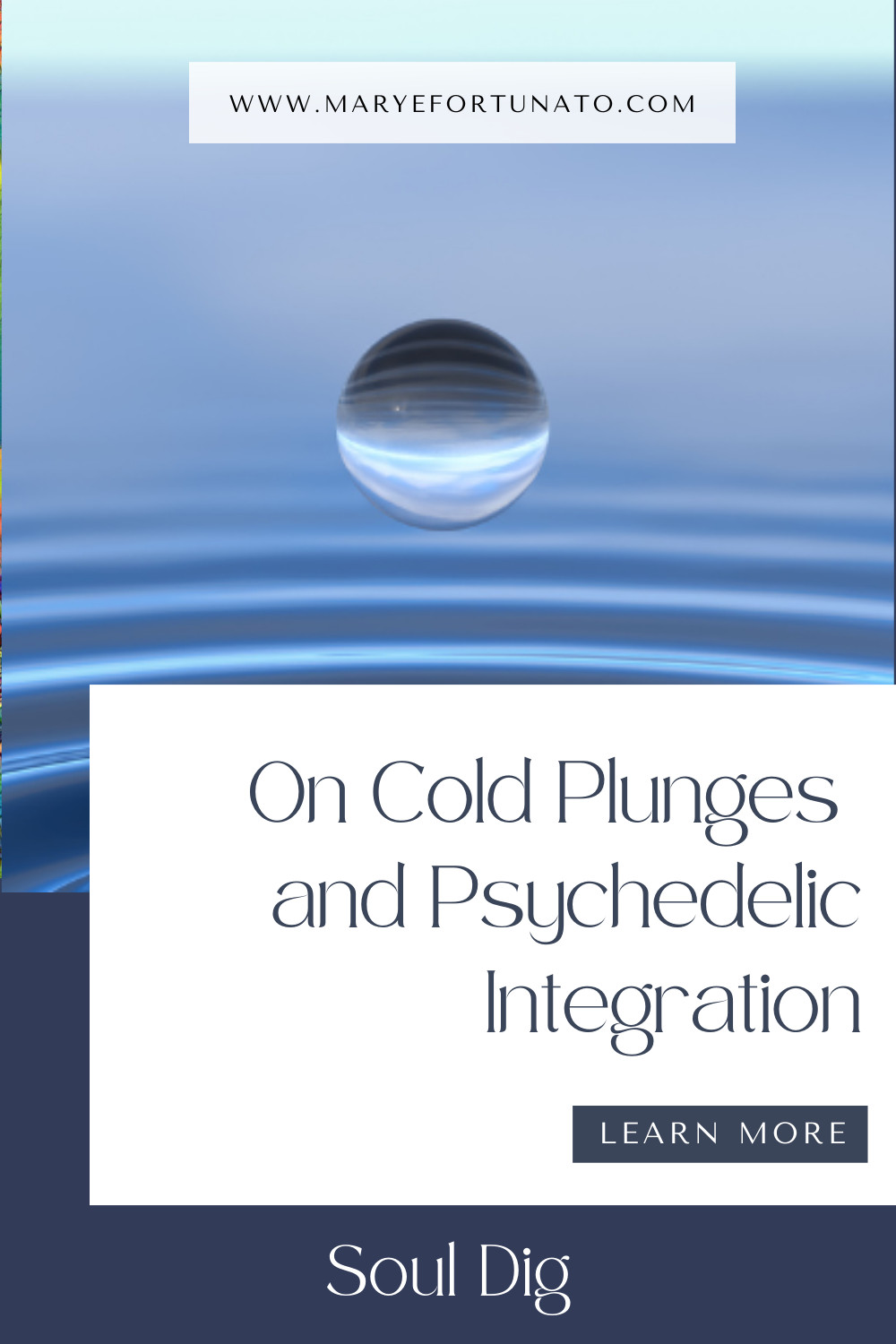

What do cold plunges ❄️ have to do with ketamine therapy? ✨
Not much, on the surface...
But read on and I’ll tell you how they are related, at least in my mind!
(...and I'll share my morning cold exposure ritual!)
You might have heard that psychedelics are catalysts for change, not silver-bullet cures.
What that means is: what we put in, is what we get out, of medicine work.
Preparation and integration are arguably the most
important aspects of ketamine therapy.
Both preparation and integration play crucial roles in the depth and effectiveness of psychedelic therapy. While this post is not an in-depth guide on preparation and integration, it's important to clarify when I say “preparation and integration” I am referring to specific practices, done consistently, to connect with mind, body and spirit.
The preparation phase includes practices like mindfulness meditation, journaling and cultivating body awareness. In integration, the insights and awareness gained in medicine sessions are processed and integrated into post-session life. This is done in therapy and at home, by using the practices of preparation to help deepen integration.
Though preparation and integration might sound
like two distinct processes,
in practice, over time, they begin to feel like a continuous process
of self-love and personal growth.
So what does all of this have to do with cold plunges?
I incorporate a cold plunge morning ritual into my preparation and integration routine. This practice helps me feel grounded and starts my day with embodied presence and gratitude. Cold plunges support me in embracing discomfort, increase my somatic awareness and help deepen my understanding of my thoughts and emotions, all while cultivating self- compassion. Additionally, I do cold plunges outdoors, which has the added benefit of being in nature.
My husband Jeremy introduced me to the power of cold plunges; specifically, the Nordic Spa ritual of hot exposure, then cold, followed by quiet relaxation. He swears it cured an almost debilitating hangover on a snowboarding trip with friends. Now, I can’t vouch for its anti-hangover effects, but, for an introvert like me, quiet, relaxing spaces, like spas, have always felt like heaven. I felt guilty about my love of spas for many years. It felt indulgent and privileged, and too expensive to do often.
Yet, the more deeply I healed, the more I saw, felt, and trusted
that my nervous system had needs I longed to prioritize.
Ketamine therapy helped me connect with and trust in my body, and deepened the belief that I deserved to feel good in daily life, not just when I could afford to escape to a fancy spa!
…and that is where hot and cold come in.
Ever since my husband discovered the power of the “ water circuit” we have shared the love of hydrotherapy. One of my favorite hydrotherapy spas is Bota Bota in Montreal.
Since we can’t live at a spa, and money is not unlimited, we wanted to find a way to bring the benefits of hydrotherapy home. So, I researched cold plunges, and found this funny little guy, The Ice Pod! And, with it, I have been able to re-create the relaxation ritual that I previously found only at a spa.
My morning Nordic Spa ritual!
So, here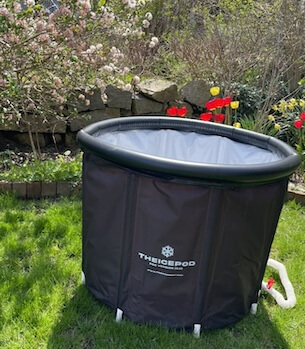 is my morning practice, loosely based on the protocol at Bota Bota, which you can find HERE.
is my morning practice, loosely based on the protocol at Bota Bota, which you can find HERE.
 is my morning practice, loosely based on the protocol at Bota Bota, which you can find HERE.
is my morning practice, loosely based on the protocol at Bota Bota, which you can find HERE.Try it and see how you feel!
- Wake up early enough to have at least 30 minutes to yourself, before the day gets too busy! (I know waking up early is hard, but try it, I think you'll think it's worth it!)
- Begin with 15 minutes of hot exposure. You can take a hot bath or shower, or, if you’re lucky enough to have a Jacuzzi, that’s even better!
- The next step is the cold plunge. A cold shower works, but I use my ICE POD! I aim for one minute, but recommendations range from 30 seconds to several minutes. (I never thought I 'd be able to tolerate more than 10 seconds, but within a month of consistent practice, I can stay for one minute in 55-ish degrees, and I actually kind of enjoy it!)
- The final step is quiet relaxation for 15-30 minutes. The trick is to relax as soon as you get out of the cold. Prepare whatever you need before the cold exposure so that you will be comfortable and warm once you get out. I make sure I have a blanket, a comfortable chair, water and socks! Bonus- relax outside while the sun comes up and birds start to sing! Nature is great for mental health!
When you relax, after the cold plunge, you will most likely have the magical experience of feeling your body coming back to life. It's like a de-thawing. I notice tingling and waves of energy through my entire body. It wakes me back up to this human body I forget about all the time. It feels magical, invigorating, and I feel so alive.
I’ve done my fair share of listening to and reading about the benefits of cold exposure.
My intention in sharing is that a mindful ritual, such as hot and cold exposure, integrated into everyday life, can bring back the sacred, and make life feel special again. Ritual can help us remember ourselves, come back to our bodies, and slow down our constantly active minds, bringing us to presence.
Maybe a hot and cold circuit is not for you, and that’s ok.
You could ask yourself, "when do I feel the most present, calm, relaxed, alive"?
Consider: watching the sunrise, doing yoga, or writing in a journal. Practices, like these, done consistently and mindfully, can become self- care rituals that enrich our lives. And, for those of us doing psychedelic therapy, they can help us prepare for and integrate medicine experiences.
I hope you'll take this post as an invitation to add some daily self-care and magic to your life! ✨
❤️ Mary
 Hi, I'm Mary
Hi, I'm MaryI believe that your symptoms make all the sense in the world. There is nothing wrong with you ❤️
I also believe that, provided the right conditions, you can reconnect with a place of awe, beauty, curiosity, and aliveness that you so deserve ✨
I believe these things as a result of what I’ve learned on my own healing journey and as a trauma therapist with the honor of supporting others on this path 🤝
I approach each client with the unshakable belief that symptoms like depression, anxiety, and trauma are natural responses to unhealed emotional pain.
Ketamine, used therapeutically, can facilitate access to these tender, usually inaccessible places WHILE allowing for a client's innate wisdom and healing intelligence to come through. When this happens, transformation occurs.
And though not everyone is a candidate for psychedelic therapy, for those who are, I see profound healing over and over again.
I believe this work is my purpose, and I am honored to contribute some of what I have learned along the way in this blog. Thank you for being here 🙏
For more information about Ketamine Assisted Psychotherapy, download my free resource here.
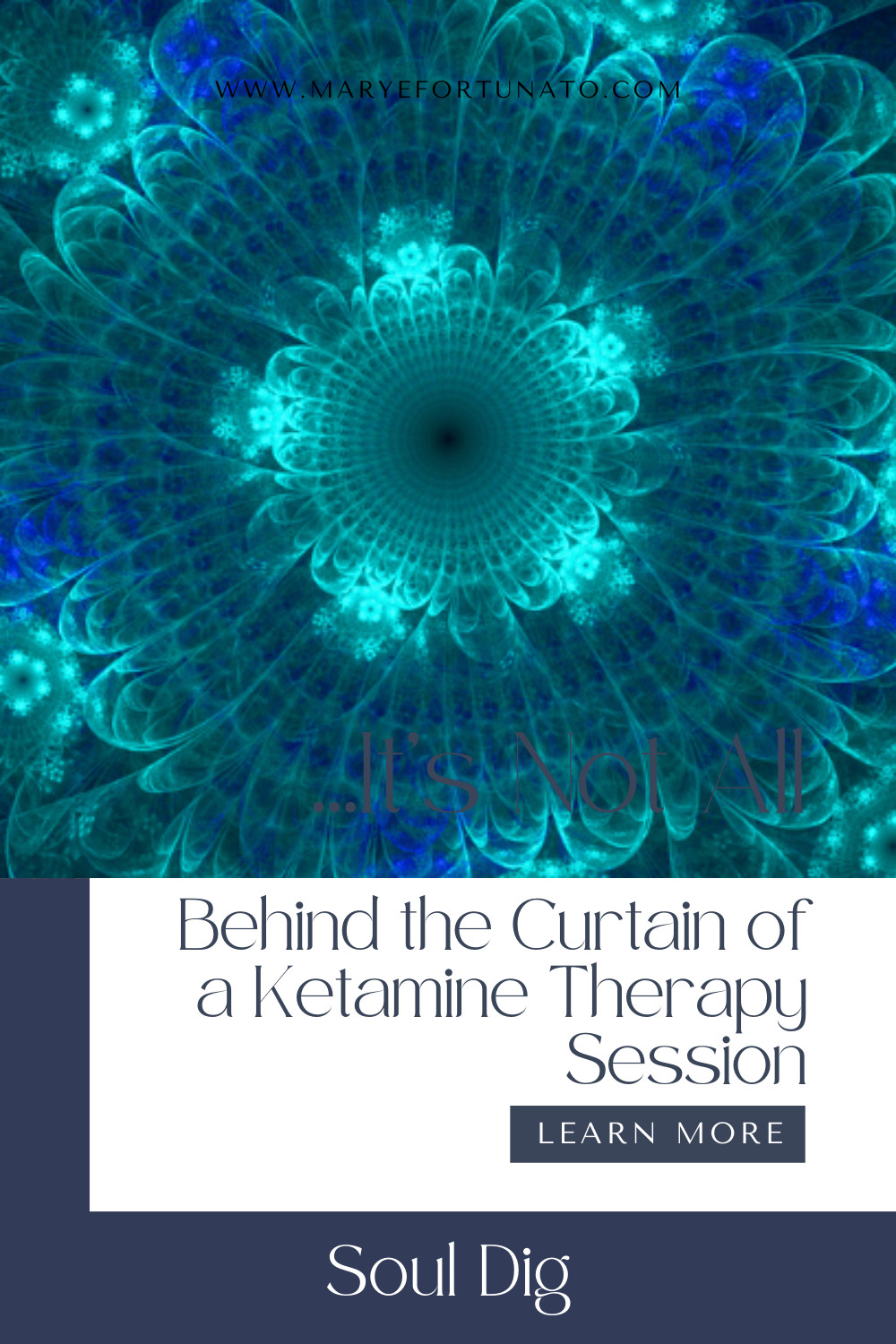
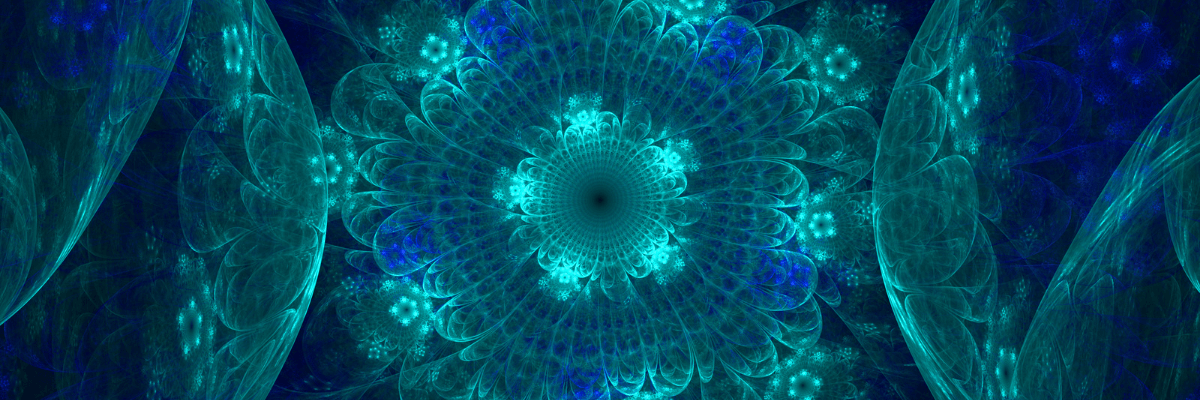
Have you ever wondered what a ketamine session would be like?
Sure, there are numerous articles about its uses and benefits, but rarely is the curtain pulled back to see the reality of what happens in a ketamine session.
🌟 Today, I'll share the 9 STEPS of a typical Ketamine session,
including my free SESSION CHECKLIST🌟
I remember how scared I was in the days before my first ketamine session. I was excited and inspired by stories of other peoples experiences, however, I had no idea what to expect. I had never been in psychedelic therapy before and could only compare it to a talk therapy session. I couldn’t grasp, really, how a Ketamine session would be different.
And though I believe facing fear and embracing uncertainty are profoundly important aspects of healing, and not to be avoided, I also believe there is enough unpredictability in psychedelic therapy that it’s important to get a sense of the typical flow and timeline of a session.
So today, I am offering you a glimpse into a ketamine assisted psychotherapy (KAP) session.
Usually, a KAP session is in a therapist’s office, and the medicine is given either in a lozenge form or through intramuscular injection. In my office, we use lozenges. (I’ll share more about different routes of administration and office settings in a future post. Suffice it to say, there is not only one “good way” to use ketamine therapeutically - each has its own benefits and drawbacks.)
I think visual aids can make understanding more concrete. So, I’m sharing access to the KAP SESSION CHECKLIST I created to guide me through ketamine sessions with clients. I hope it’s helpful for those interested in KAP and for my KAP therapist readers, too!
This checklist includes the most typical aspects of a KAP session, including the flow. These steps are not meant to be rigid guidelines, and are not all necessary for every client. Just like playlists, the most important rule is that every session should be individualized to the client’s specific needs.
It is also important to note that a medicine session, like the one described in my checklist, only occurs after a preparation phase. This is not the first appointment with a KAP therapist (more on KAP preparation in an upcoming post!)
A typical KAP session lasts around three hours. I prepare the office prior, with beautiful flowers, candles, calming music and a cozy surface to lie on. Once a client arrives and gets comfortable, the session begins and typically follows the flow of my checklist. Here, I’ll say a little bit more about each step:
1. Discuss Logistics & Ride:
Although ketamine effects are strongest for 60-90 minutes, subtle changes can be felt for hours after a session. It is essential that clients have a ride, to know who it is ahead of time, and have contact info to coordinate pickup.
2. Review Consent and Touch:
There is no way I can do justice to this topic in a couple sentences. It is crucial that a Psychedelic therapist is trained in, and acts with integrity around, the use of touch in sessions. For the purposes of this post, what you need to know is that a therapist and client must discuss the ways touch can be used in a session for safety and/or support. (Know that supportive touch is NEVER sexual, and, only if the client requests, can include touch like holding a hand or squeezing a shoulder). Until there is an understanding and agreement about what a client consents to, the session should not proceed.
3. Decide Dose and Booster:
A client must have a screening with a medical professional prior to beginning KAP. For those who are eligible, a specific dose range will be prescribed. Sublingual ketamine dosage (using oral lozenges) is not a perfect science- weight alone does not determine the dose. For this reason, a range is prescribed and usually the recommendation is to start low and go slow. Together, the therapist and client discuss what the dose in that range will be, and, if the client wants a booster, that is usually offered 15-30 minutes after the initial dose.
4. Intention:
Prior to the KAP session, the client has been asked to set an intention. The therapist and client discuss the intention and make any changes, if the client chooses to.
5. Share Meaningful Objects:
Not all KAP sessions incorporate ritual and ceremony, but I do for the right clients. This includes inviting them to bring and share any meaningful objects that might provide support during their session. This can include things like a stone, a picture or a favorite stuffed animal.
6. Pick Card, Bless Medicine and Sage:
This is a continuation of the ritual and ceremony. Often, clients will pick an Oracle card for guidance and/or a new perspective before a journey. Also, for some, it is supportive to bless the medicine and use smudge sticks, like sage or palo santo, to cleanse the space prior to medicine.
7. Bathroom Before Medicine:
You might not know this, but Ketamine is a diuretic. And, though some of my clients limit fluids for hours before a session, once in a while, someone will need to use the restroom at the peak of ketamine’s effects. (Ok, I’ll admit- that is me- every friggen time!) It is not a problem, however, it can bring one out of the medicine experience and make it harder to get back. For this reason, I always advise clients (and therapists!) to use the restroom right before the client takes the medicine.
8. Light Candle, Restate Intention:
It can be nice to circle back to the intention so the client can be reminded why they are embarking on this journey. Lighting a candle signifies the beginning of the medicine session.
9. Get Cozy and Journey:
At this point, we’ve completed all the prep work. All there is to do is to help the client get as comfortable as possible and settle in for the journey! Often, I share a reading or meditation as clients take the medicine.
🌟 Though it is not noted above or in the checklist, I always end KAP sessions with a vegetarian
charcuterie plate, in the way my mentor taught me. Mindful eating of beautifully prepared food can bring comfort, and bring one "back to the room" and body after a journey. It is usually welcomed by clients who have been directed to fast for 4 hours prior to their medicine session.
My hope is that I’ve shed some light on the flow and steps of a typical KAP session and made it a little less mysterious for those who are just learning.
I also hope the KAP SESSION CHECKLIST, which you can access here, will provide support and direction for my fellow KAP therapists, as it has for me.
Stay tuned for more insights on navigating the world of psychedelic therapy.
Mary ❤️

I believe that your symptoms make all the sense in the world. There is nothing wrong with you ❤️
I also believe that, provided the right conditions, you can reconnect with a place of awe, beauty, curiosity, and aliveness that you so deserve ✨
I believe these things as a result of what I’ve learned on my own healing journey and as a trauma therapist with the honor of supporting others on this path 🤝
I approach each client with the unshakable belief that symptoms like depression, anxiety, and trauma are natural responses to unhealed emotional pain.
Ketamine, used therapeutically, can facilitate access to these tender, usually inaccessible places WHILE allowing for a client's innate wisdom and healing intelligence to come through. When this happens, transformation occurs.
And though not everyone is a candidate for psychedelic therapy, for those who are, I see profound healing over and over again.
I believe this work is my purpose, and I am honored to contribute some of what I have learned along the way in this blog. Thank you for being here 🙏
For more information about Ketamine Assisted Psychotherapy, download my free resource here.
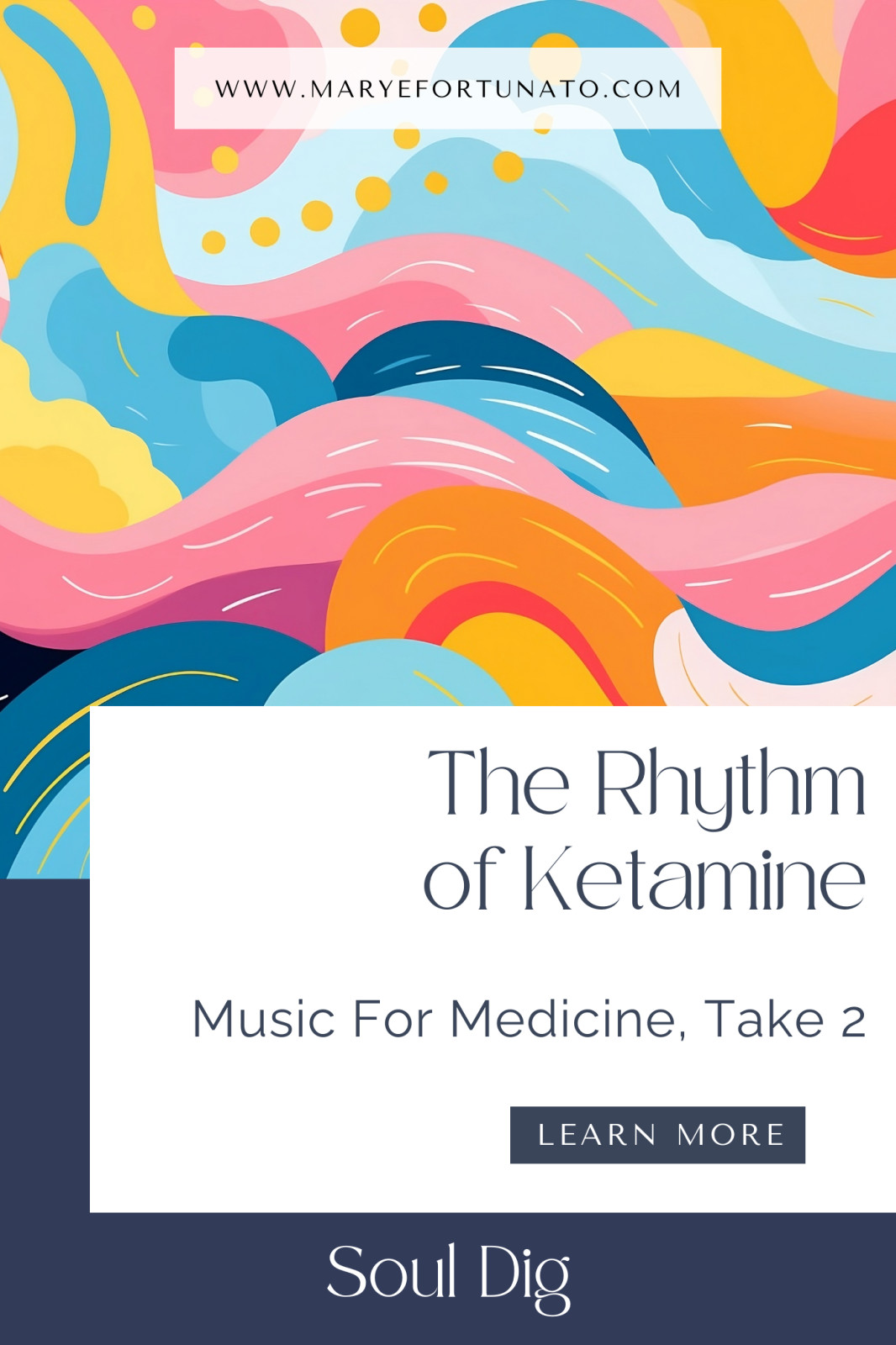
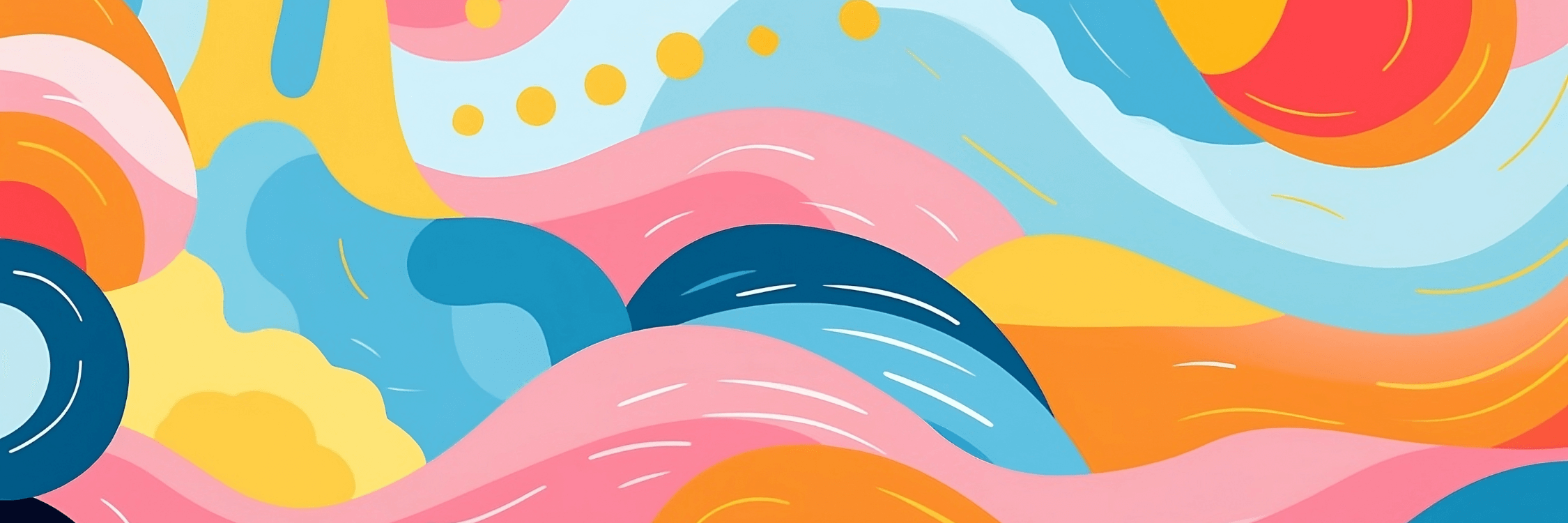
Today I want to share how I really feel about music in ketamine therapy. (In case you didn’t read about my blunder with the previous music post, you can do that in my “ON RUPTURE AND REPAIR” post from Apr 11)
Specifically, I want to focus on the significant role music plays in ketamine therapy
(& I've included a link to a free playlist below!)
below!)
(& I've included a link to a free playlist
 below!)
below!)It is essential to acknowledge that Indigenous cultures informed and shaped the development of modern psychedelic medicine. I wouldn’t be here, doing what I do, without the benefit of their contributions and traditions. Indigenous People have long recognized and integrated music as a crucial element in medicine ceremonies.
As a psychedelic therapist and enthusiast, I’ve both experienced and observed the transformative power of music—from its ability to soothe and inspire, to its potential to provoke. Music feels bigger, more vibrant, and more alive on ketamine.
In fact, there's a fascinating phenomenon that sometimes happens in psychedelics, known as synesthesia, where your senses sort of blend together. Music, for example, can become more than something you just hear; you might actually feel each note or see colors swirling with the melody. It's a bit overwhelming to think about if you've never experienced it, but it has the power to profoundly change how you view the world.
In a typical individual ketamine session, a client lies down, often with headphones on, while listening to a specialized playlist created to support the healing process. When I first trained in Ketamine assisted psychotherapy (KAP), it was common to use only ambient music. A session playlist might sound like a single song, with only slight changes, over the course of the whole medicine session, usually around an hour to an hour and a half.
Sorry to you ambient music-lovers out there, but, to me, it felt dull and never-ending. And though unified playlists can create a holding space where a listener feels carried by the music without being directed by it, they can also elicit anxiety and feeling untethered, especially in newbies.
Each individual will have their own music preferences, and discovering what is most supportive and healing is part of the process. Here, I'll share what I have learned as the result of facilitating and experiencing more than 200 medicine sessions.
To begin with... there are lots of types of music to choose from when creating a ketamine playlist.
Some that stand out are:
Shamanic Drumming can help clients connect with their bodies, feelings of uplift, awe and power.
On the other hand, it can be helpful to be reminded of a wide range of emotions, from tenderness and sorrow to joy and calm; this can happen with classical music.
If you’ve never heard “Beautiful Chorus”, run out and do so! Their “High Frequency Love Music” is like a musical meditation. I often rely on their use of inspirational mantras and supportive lyrics, especially for first timers.
Popular music, used carefully, can bring someone back to a happier time, or bring up important memories long forgotten. When discussing this blog with my daughter, she reminded me of how Harry Styles (yes, I am embarrassed to admit it is true!) changed my life with his song “Lights Up”, during a ketamine journey (more on that another time!).
In addition to genre, there are other factors, too...
The Length and speed of songs can significantly affect a medicine session. A playlist of many short songs can make the journey feel choppy and disconnected; while long songs provide a more grounded feeling. Fast songs tend to elicit feelings of movement, while slower songs can help one settle in and linger.
When I make playlists for clients, I spend significant time considering each person’s needs and comfort level...
This includes taking into account how much psychedelic experience they have. For a first session, I tend to use soft, non-provocative songs, often with joyful tones. I believe it is important for clients to “meet the medicine” in a gentle way. Yet, further in their treatment, playlists will change to meet a client’s needs.
In the end, there is no one-size fits all approach, but the following are guidelines to consider:
- use songs with lyrics carefully and infrequently, as lyrics can be distracting and intrusive
- include songs that are unfamiliar for a novel experience and to broaden perspective
- stay mindful of religious overtones and their effects on each individual
The only rule that feels 100% true to me, when it comes to selecting songs for ketamine playlists,
is that they are consciously chosen, with each client in mind.
I created a public Spotify account to share some of my favorite songs for ketamine.
Please note, I tried to create a perfect medicine session playlist to share; however, I couldn’t help but include my favorites, so your perfect playlist might be slower and less active than mine. This is meant to be a sampling of what a playlist could sound like- I hope you enjoy!
🙏 Happy listening,
Mary ❤️
 Hi, I'm Mary
Hi, I'm MaryI believe that your symptoms make all the sense in the world. There is nothing wrong with you ❤️
I also believe that, provided the right conditions, you can reconnect with a place of awe, beauty, curiosity, and aliveness that you so deserve ✨
I believe these things as a result of what I’ve learned on my own healing journey and as a trauma therapist with the honor of supporting others on this path 🤝
I approach each client with the unshakable belief that symptoms like depression, anxiety, and trauma are natural responses to unhealed emotional pain.
Ketamine, used therapeutically, can facilitate access to these tender, usually inaccessible places WHILE allowing for a client's innate wisdom and healing intelligence to come through. When this happens, transformation occurs.
And though not everyone is a candidate for psychedelic therapy, for those who are, I see profound healing over and over again.
I believe this work is my purpose, and I am honored to contribute some of what I have learned along the way in this blog. Thank you for being here 🙏
For more information about Ketamine Assisted Psychotherapy, download my free resource here.
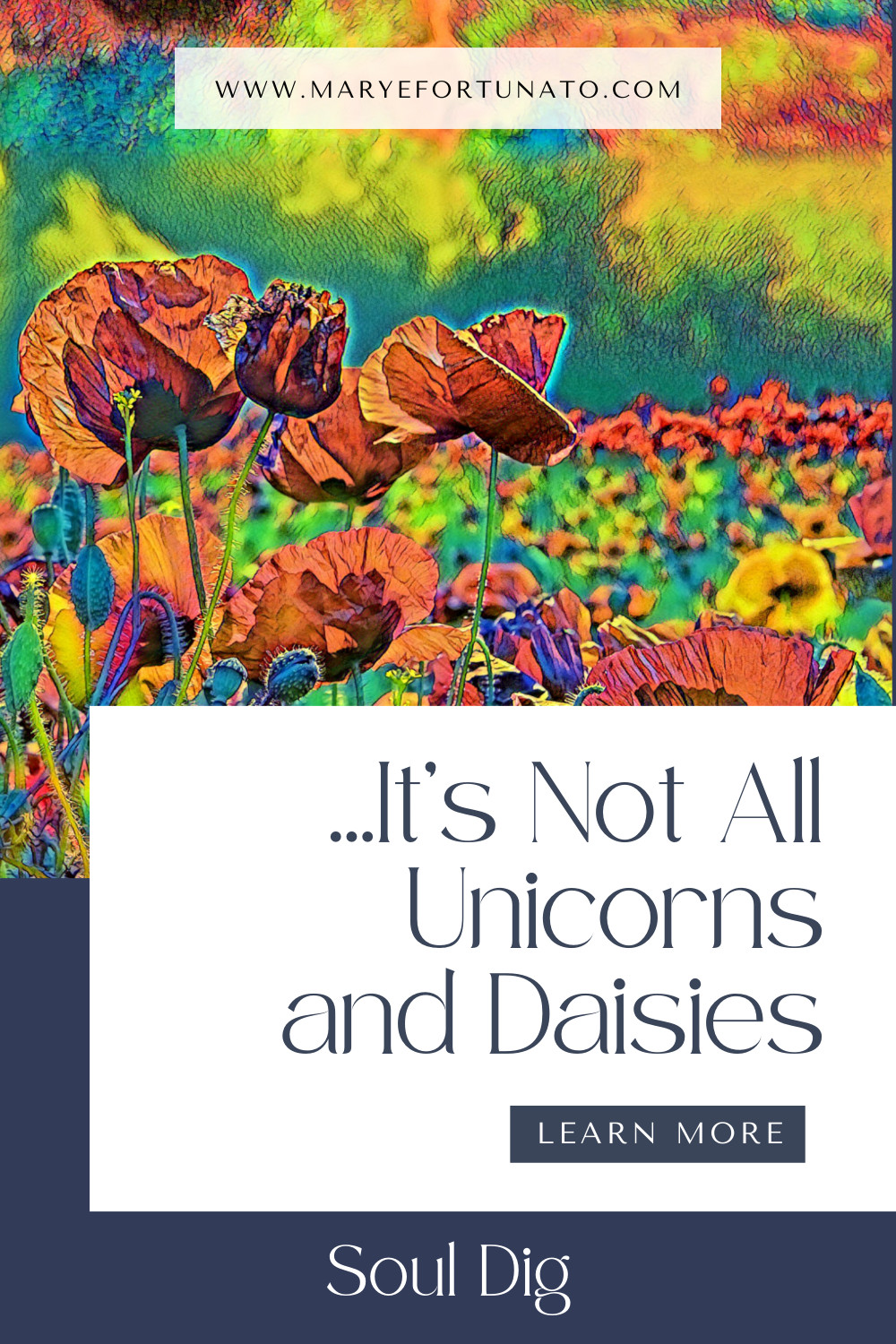
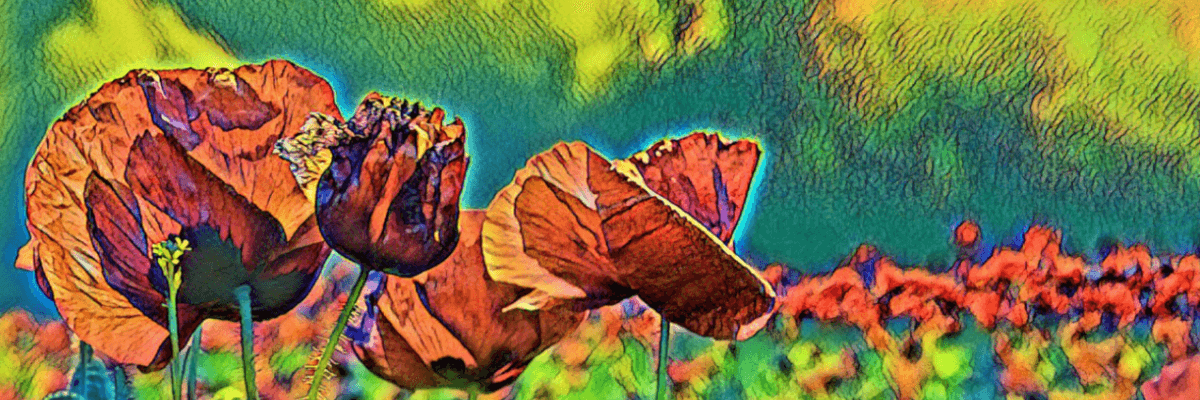
Recently, I shared a blog post about some of the ways in which Ketamine therapy has helped me, from expressing more of who I am through writing, to a growing trust in wisdom I once only understood intellectually.
And, everything I shared was absolutely true. If anything, authenticity is the value that has grown in importance to me, with psychedelic therapy.
However, upon reflection, I realized that I only shared the good. It was a post about how psychedelics have helped me, after all.
Yet, like everything in life, it is not all good. One of my favorite words, “brutiful”, coined by writer Glennon Doyle, brings together the words brutal and beautiful.
She says you can’t fully experience the beautiful without also feeling the brutal.
Ketamine therapy has made this real for me. As I’ve let go enough, in medicine work, to experience expanded awareness, new perspectives, beauty, wonder and joy, I’ve also felt the depth of old hurts and the stinging of pain previously dulled.
Brené Brown, another one of my favorite teachers, says you cannot selectively numb pain. When you numb pain, you also numb the good. I see the other side of this, all the time, in psychedelic therapy. When we open to feeling good, by default, we make space for memories and feelings we couldn’t tolerate previously.
The more deeply I feel the beauty in the world, the more deeply I feel awe, curiosity, and wonder, the more deeply I also feel pain, heartbreak and grief.
In psychedelic therapy, we can remember what it is like to live from a felt sense, from our hearts and feelings, instead of shielding ourselves from the vulnerability of being alive. When we stay open in this way, we can feel deep sorrow and pain, and yet, what I’ve experienced, is that it is held in a more expanded space.
My experience with psychedelic therapy has given me more than just emotional healing, it has felt like a spiritual awakening, which is not always easy. Not everyone thinks of it this way, and it is not necessary to. However, for me, this quote beautifully expresses this process:
“To stay with that shakiness—to stay with a broken heart, with a rumbling stomach, with the feeling of hopelessness and wanting to get revenge—that is the path of true awakening. Sticking with that uncertainty, getting the knack of relaxing in the midst of chaos, learning not to panic—this is the spiritual path.” ~Pema Chodron
So, therapy does not take away pain and suffering. Sometimes things can feel worse before they get better. Yet, when it works, our capacity to hold it gets bigger, our trust in ourselves and knowing that things will be OK, somehow, seems to widen.
This happens in medicine work, but also as a result of the preparation and integration phase of psychedelic therapy. Clients are invited to consciously carve out time for themselves, before and after medicine sessions, to engage in contemplative practices like meditation, journaling and building body awareness.
It is my hope, that when clients do this consistently when they are feeling good, it is easier to do the same when they are feeling less good. And that has been my personal experience.
So, whether you are a seasoned psychonaut, or not sure if psychedelic therapy is for you, this post remains true. When we awaken to ourselves more deeply, whether through psychedelics, talk therapy, or any other approach, we can also start to awaken to buried hurt. We do not get a free pass out of those things. However, we can grow our capacity to hold it all.
Embracing this "brutiful" life,
Mary ❤️
 Hi, I'm Mary
Hi, I'm MaryI believe that your symptoms make all the sense in the world. There is nothing wrong with you ❤️
I also believe that, provided the right conditions, you can reconnect with a place of awe, beauty, curiosity, and aliveness that you so deserve ✨
I believe these things as a result of what I’ve learned on my own healing journey and as a trauma therapist with the honor of supporting others on this path 🤝
I approach each client with the unshakable belief that symptoms like depression, anxiety, and trauma are natural responses to unhealed emotional pain.
Ketamine, used therapeutically, can facilitate access to these tender, usually inaccessible places WHILE allowing for a client's innate wisdom and healing intelligence to come through. When this happens, transformation occurs.
And though not everyone is a candidate for psychedelic therapy, for those who are, I see profound healing over and over again.
I believe this work is my purpose, and I am honored to contribute some of what I have learned along the way in this blog. Thank you for being here 🙏
For more information about Ketamine Assisted Psychotherapy, download my free resource here.
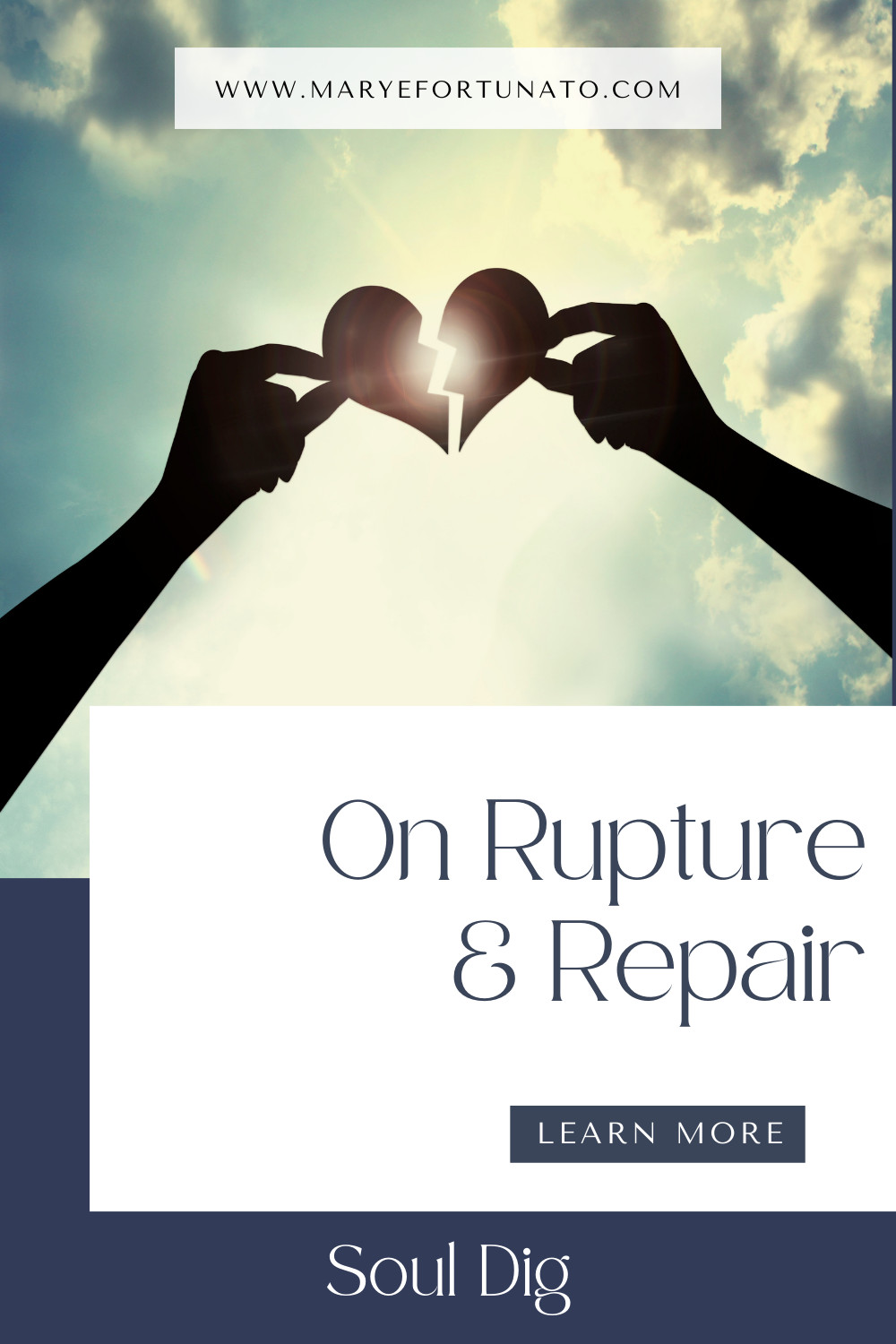
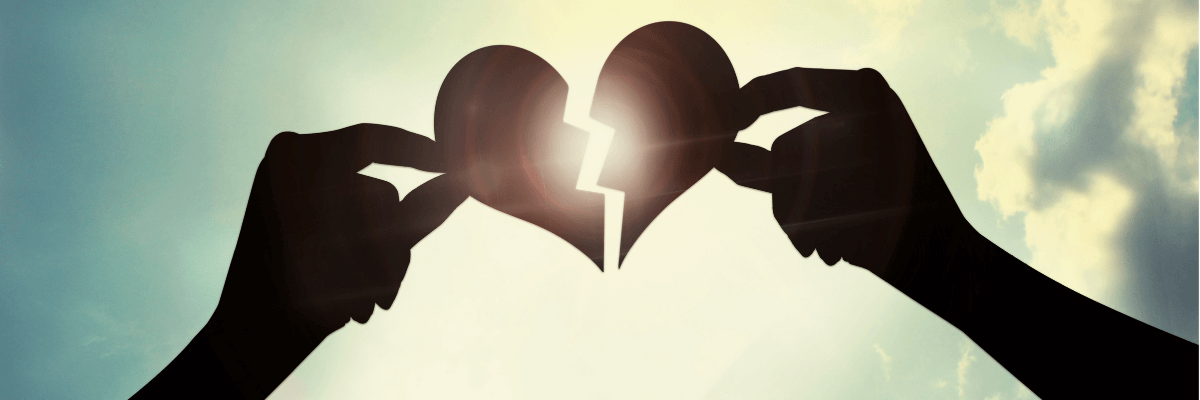
In psychology, we often talk about the importance of rupture and repair.
In short, the term points to the ways in which we disconnect from and hurt those we care about, and how we can come back together, and repair the relationship.
Making mistakes and hurting people is human. As much as we try, we still do things, either intentionally or accidentally, that cause suffering. There is no way to avoid this, though we can try our best. What we can control is how we react once we’ve caused a rupture in a relationship.
Most of us have responded to hurting someone we care about in unhelpful ways. For example, maybe you closed up in shame and self-judgement after a rupture, which resulted in more disconnection from yourself and the other. I know I've been guilty of this.
Or, maybe you have used an ”easy button” like keeping busy, shopping, drinking, or eating to avoid knowing and feeling what you've done. This, too, leaves little opportunity for repair.
But there is a healthier, more loving alternative that leaves us and important others feeling more connected, even after a rupture.
This is when we choose to tolerate the discomfort of knowing we’ve hurt someone, and are courageous enough to acknowledge, both to ourselves and the other person, what we've done. We love ourselves enough to know that causing pain is human and instead of shaming ourselves or shutting down, we decide to be vulnerable, admit our errors, and apologize for the pain we’ve caused.
In this process, the rupture, which could have caused disconnection, provides an opportunity to deepen trust and connection.
I am writing about this today because I want to apologize for an inauthentic way I showed up recently in this blog, something that could have caused a rupture, and a lack of trust. As a new blogger, I am constantly making mistakes, and last week was one of them.
This is when we choose to tolerate the discomfort of knowing we’ve hurt someone, and are courageous enough to acknowledge, both to ourselves and the other person, what we've done. We love ourselves enough to know that causing pain is human and instead of shaming ourselves or shutting down, we decide to be vulnerable, admit our errors, and apologize for the pain we’ve caused.
In this process, the rupture, which could have caused disconnection, provides an opportunity to deepen trust and connection.
I am writing about this today because I want to apologize for an inauthentic way I showed up recently in this blog, something that could have caused a rupture, and a lack of trust. As a new blogger, I am constantly making mistakes, and last week was one of them.
For one of my first blog posts, I wanted to share my thoughts on music and ketamine. I was nervous about my writing and turned to Chat GPT for inspiration and to visualize what my blog could look like. With my web designer's help, I watched as my blog became something within reach. It was just the motivation I needed! I wrote a completely authentic, stream-of-consciousness post about music and scheduled it to go out in a couple of week's time. However, due to a series of missteps, the generic blog post, rather than my original writing, accidentally went out.
After the blog went out, I thought...
I let you down.
I am sorry.
Those were not my words and do not reflect my truth.
I want you to know that my deepest intention is to show up authentically, something that I did not do with that music post.
This could have caused distrust and ruptured our relationship.
The purpose of my blog is to share what I have learned on my own healing journey, and as a psychedelic therapist.
The purpose of my blog is to share what I have learned on my own healing journey, and as a psychedelic therapist.
And today is no different.
I want to share my process of showing up, both for myself and for you.
To be honest about who I want to be, an authentic person who shares vulnerably and truthfully. Yet, I admit that I have not lived up to those values, not with shame or self-judgement, but with courage and self-compassion.
“Out beyond ideas of wrongdoing and rightdoing, there is a field. I'll meet you there" says the poet Rumi. I can't say I fully grasp this quote's depth on an intellectual level; however, I feel it. Psychedelic therapy has helped me trust in Rumi's wisdom, more and more. Yes, we make mistakes, yes we hurt people, that is life. We don’t have to make ourselves wrong for being imperfect. Instead, we can acknowledge our mistakes with honesty, have compassion for self and other, and have the courage to do what we can to repair the relationship.
Questions for Reflection
Does this post make you think of ways in which you may have caused a rupture in a relationship?
Have you ever shut down in shame or avoided acknowledging when you have caused pain?
What would it be like to acknowledge your mistakes, your humanness, with love and compassion to both yourself and the other?
Is there a way you could imagine repair being possible?
With Gratitude for Authentic Connections,
Mary ❤️
 Hi, I'm Mary
Hi, I'm MaryI believe that your symptoms make all the sense in the world. There is nothing wrong with you ❤️
I also believe that, provided the right conditions, you can reconnect with a place of awe, beauty, curiosity, and aliveness that you so deserve ✨
I believe these things as a result of what I’ve learned on my own healing journey and as a trauma therapist with the honor of supporting others on this path 🤝
I approach each client with the unshakable belief that symptoms like depression, anxiety, and trauma are natural responses to unhealed emotional pain.
Ketamine, used therapeutically, can facilitate access to these tender, usually inaccessible places WHILE allowing for a client's innate wisdom and healing intelligence to come through. When this happens, transformation occurs.
And though not everyone is a candidate for psychedelic therapy, for those who are, I see profound healing over and over again.
I believe this work is my purpose, and I am honored to contribute some of what I have learned along the way in this blog. Thank you for being here 🙏
For more information about Ketamine Assisted Psychotherapy, download my free resource here.




